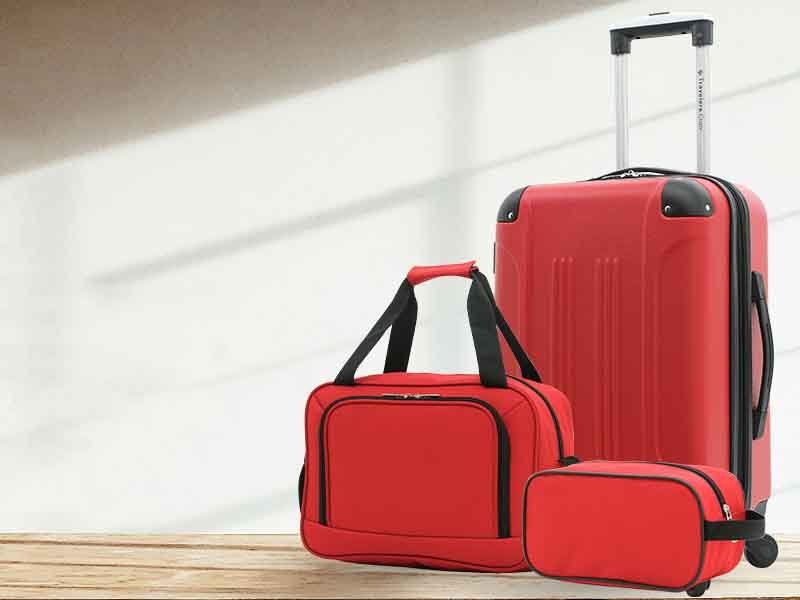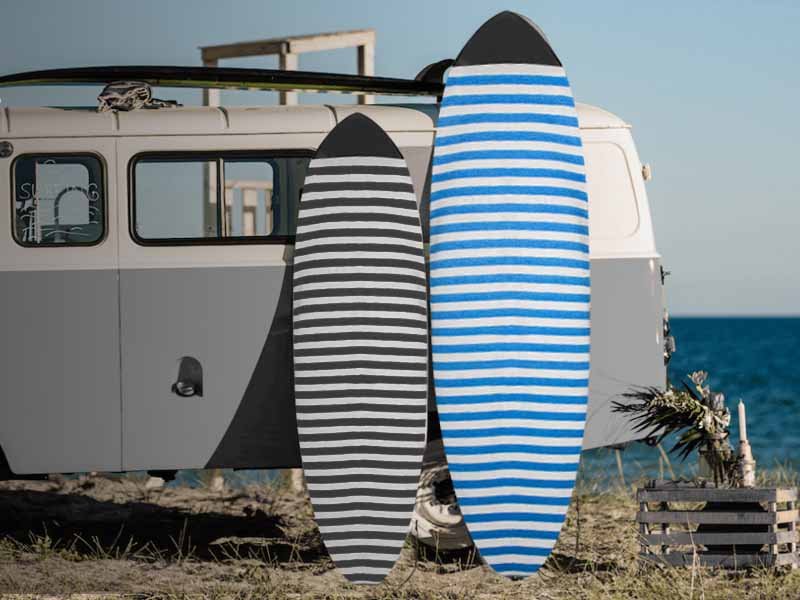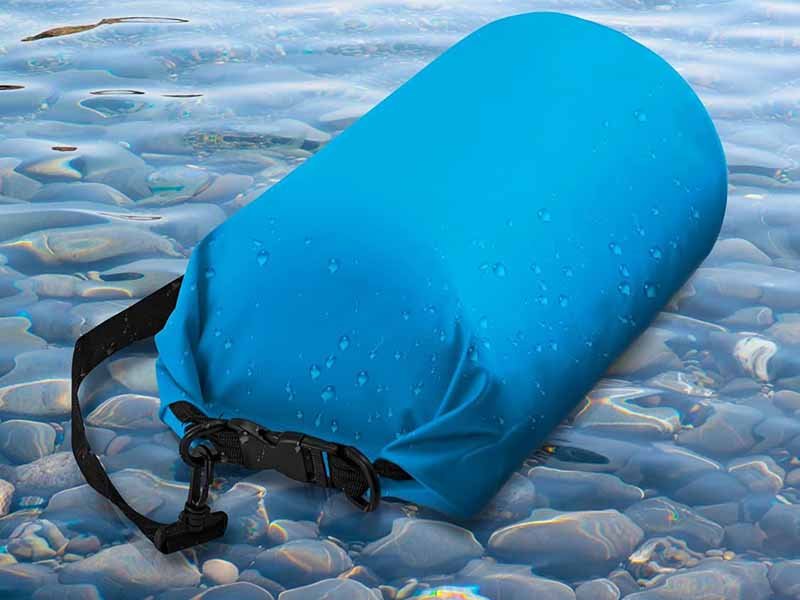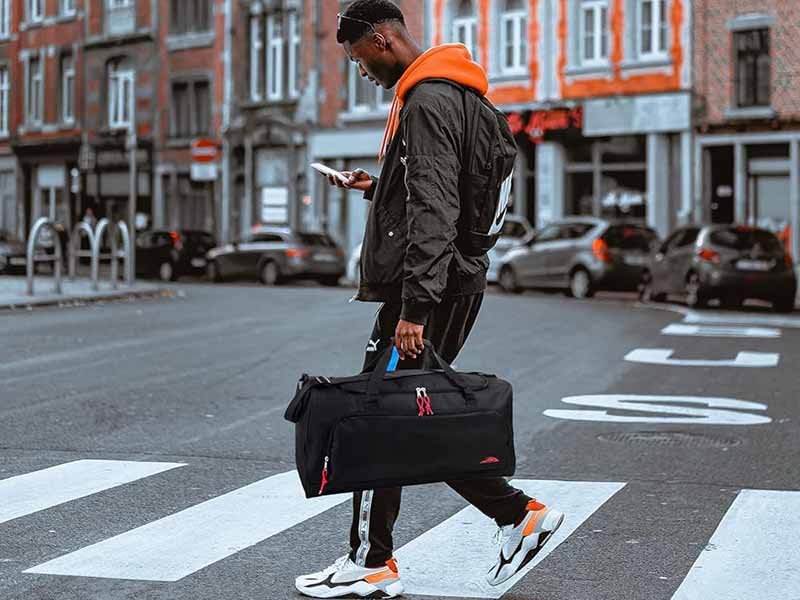You’re pacing through airport security, boarding pass in hand—and suddenly you spot the carry-on sizer. Your heart skips a beat: will your bag squeeze in, or will it face the dreaded “gate check” sticker? Beyond the last-minute panic, picking the right carry-on size saves you time, money, and stress. From hidden airline quirks to sneaky personal-item rules, understanding exact dimensions is key to breezing through boarding without unwanted fees or delays.
Standard carry-on dimensions for most U.S. and European carriers are 22″ × 14″ × 9″ (56 × 35 × 23 cm), including handles and wheels. Personal items (under-seat bags) typically max out at 18″ × 14″ × 8″. Always measure your packed bag corner-to-corner—height, width, and depth—to avoid surprises at the gate. Checking your airline’s policy before departure ensures seamless boarding and saves you from extra fees.
That moment when your bag slides smoothly into place? Pure victory. At Szoneier, we’ve helped thousands of travelers prototype and perfect carry-ons that fit any bin. Stick around as we unpack airline rules, measurement tricks, TSA liquid limits, and packing hacks—so next time you’ll never break into a sprint at boarding call.
What Are the Standard Carry-On Size Limits for Major Airlines?
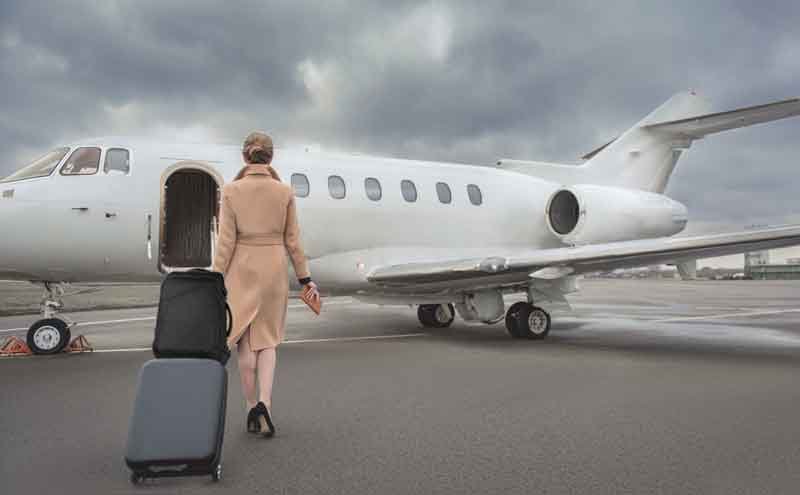
Most major airlines—including United, Delta, and American—limit carry-on bags to 22″ × 14″ × 9″ (56 × 35 × 23 cm), handles and wheels included. In Europe, EasyJet’s under-seat bag is 45 × 36 × 20 cm, while Ryanair allows a small personal bag of 40 × 20 × 25 cm with Priority fare holders permitted an additional 55 × 40 × 20 cm cabin bag. Always verify your carrier’s exact dimensions to ensure compliance.
Understanding “standard” carry-on sizes requires dissecting each carrier’s policy, regional nuances, and the equipment at hand:
- United Airlines
- Limit: 22 × 14 × 9 in (56 × 35 × 23 cm).
- Enforcement: While United markets this as universal, gate agents may still measure; oversize carry-ons incur a $35 fee and are gate-checked.
- Tip: During check-in, slide your empty bag into United’s sizing frame—if it fits, you’re golden.
- Delta Air Lines
- Limit: 22 × 14 × 9 in or 45 linear inches total (sum of height + width + depth).
- Enforcement: Delta strictly counts wheels and handles in linear inches.
- Tip: Aim for 21.5 × 13.5 × 8.5 in for a buffer under 45 linear inches.
- American Airlines
- Limit: 22 × 14 × 9 in (56 × 36 × 23 cm), up to 45 linear inches.
- Exception: Jackets, umbrellas, and duty-free items are exempt from counting toward your limit.
- Tip: Wear bulky jackets to free up carry-on space without penalties.
- EasyJet (Europe)
- Under-Seat Bag: 45 × 36 × 20 cm, max 15 kg.
- Large Cabin Bag (Up Front/Extra Legroom): 56 × 45 × 25 cm, subject to bin space.
- Enforcement: Staff at boarding gate judge actual fit; no fixed sizer.
- Tip: Upgrade to “Up Front” to guarantee bin space for larger cabin bags.
- Ryanair (Europe)
- Personal Bag (Free): 40 × 20 × 25 cm.
- Priority Cabin Bag (Paid): 55 × 40 × 20 cm; only 100 spots per flight—others get gate-checked for €60.
- Enforcement: Rigid: no flex, no kidding.
- Tip: Pre-book Priority to secure bin space and avoid hefty fines.
| Airline | Free Bag(s) | Max Dimensions | Notes |
|---|---|---|---|
| United | Carry-on + Personal Item | 22×14×9 in (carry-on) | Gate agents may measure; $35 fee if oversized |
| Delta | Carry-on + Personal Item | 22×14×9 in or 45 linear inches | Counts wheels/handles |
| American | Carry-on + Personal Item | 22×14×9 in or 45 linear inches | Jackets & duty-free exempt |
| EasyJet | Under-Seat (free) + Optional | 45×36×20 cm (under-seat); 56×45×25 cm (cabin) | No formal sizer; subject to bin space |
| Ryanair | Personal (free) + Priority Option | 40×20×25 cm (personal); 55×40×20 cm (cabin) | Strict enforcement; €60–75 fines |
Regional Variations: U.S. carriers follow FAA but differ on linear vs. per-side. European low-cost carriers split allowances between personal and cabin bags, often with stricter enforcement.
Bin Variability: Aircraft types within one airline can have different bin sizes—widebodies vs. regional jets—so pack for the smallest common denominator.
Which Airlines Have the Strictest and Most Generous Carry-On Policies?
European low-cost carriers Ryanair and Wizz Air enforce tight personal-bag sizes (40 × 20 × 25 cm) with steep fees for oversize items, while legacy airlines like United and Delta may overlook minor variances if bin space allows. EasyJet offers a free under-seat bag (45 × 36 × 20 cm) plus optional cabin upgrades. American Airlines permits jackets, duty-free items, and medical devices outside the standard 22 × 14 × 9 in rule. Choosing the right fare class or upgrade can save you hefty penalties.
| Airline | Strictness | Free Bag Details | Upgrade Options |
|---|---|---|---|
| Ryanair | ★★★★★ (Very High) | 40×20×25 cm personal bag only; €60–75 gate-check fee for oversize | Priority (adds 55×40×20 cm cabin bag) |
| Wizz Air | ★★★★★ (Very High) | 40×30×18 cm small bag only; no second free bag | WIZZ Priority (adds large bag + boarding) |
| EasyJet | ★★☆☆☆ (Moderate) | 45×36×20 cm under-seat; larger cabin bag via seat-class upgrade | Up Front/Extra Legroom (adds 56×45×25 cm bag) |
| United | ★★☆☆☆ (Moderate) | 22×14×9 in carry-on + personal item; occasional leniency | N/A |
| Delta | ★★★☆☆ (Strict) | 22×14×9 in carry-on + personal item; strict linear inches | N/A |
| American | ★★★☆☆ (Strict) | 22×14×9 in carry-on + personal item; non-bag items exempt | N/A |
- Stricter Carriers (Ryanair & Wizz Air):
- No Free Cabin Bag: Only a small personal item; full-size carry-on requires paid add-ons or results in steep gate fees.
- Minimal Flexibility: Tote bags that even slightly exceed size get tagged.
- Moderate Enforcement (EasyJet):
- Subjective Bin Space Measurement: No standard sizer; gate staff judge fit based on bin availability.
- Paid Upgrades: For a small fee, you access overhead bin space for a larger carry-on.
- Lenient/Legacy (United, Delta, American):
- Occasional Leniency: Agents may ignore a fraction of an inch over if bins aren’t full—but this is never guaranteed.
- Tip: Carry an extra foldable bag in case your primary bag fails the test.
How Do You Accurately Measure Your Carry-On Bag?
Measure your carry-on at its fullest: include wheels, handles, and any protrusions. Use a tape measure to record height (top of handle to bottom of wheels), width (side to side), and depth (front face to back of wheels). Check corner-to-corner diagonals if your bag has curved edges. Measure after packing typical contents—empty bag dimensions can lie. Accurate measurement prevents gate-check fees and ensures smooth boarding.
Getting the perfect measurement requires attention to detail:
- Gather Tools:
- Rigid tape measure (inches/cm)
- Flat surface (floor or table)
- Helper (optional, for stability)
- Three Critical Dimensions:
- Height: From the very top of the extended handle (or top of bag if retractable) to the bottom of the wheels or feet.
- Width: Side-to-side across the widest point.
- Depth: Front face of the bag to the back of wheels or external pockets.
- Include Protrusions:
- Wheels & Handles: Even if retractable, measure handles fully extended.
- External Pockets: Water bottles, laptop sleeves, side pockets count toward depth.
- Packing Up:
- Full Load Test: Pack your bag as you would on a typical trip—shoes, toiletries, gadgets. Then measure to capture the “in-use” size.
- Corner-to-Corner Check: For curved bags (ovals or soft shells), measure the longest diagonal to verify no surprise pinch points in the bin.
- Use Airline Sizers:
- Most major airports have sizer frames at check-in. If your bag slides in effortlessly, you’re compliant. If it sticks, consider rearranging or swapping to a slimmer profile.
| Measurement Step | Action Item | Common Mistake |
|---|---|---|
| Height | Top handle (extended) → bottom of wheels | Measuring bag body only, ignoring handle |
| Width | Widest side-to-side point | Missing bulges from pockets |
| Depth | Front face → back of wheels/pockets | Overlooking wheels entirely |
| Full Load Test | Pack normally, then measure | Measuring empty bag for ideal dimensions |
| Bin Fit | Slide into airline sizer before leaving home | Skipping sizer test |
Are Personal Items Counted in Your Carry-On Allowance?
Personal items—like purses, laptop bags, and tote bags—are distinct from carry-on luggage and must fit under the seat in front of you. Typical dimensions are 18″ × 14″ × 8″ (45 × 35 × 20 cm). They do not count against your carry-on allowance, but airlines may enforce a single personal item rule. Packing liquids follows TSA’s 3-1-1 rule: 3.4 oz (100 ml) bottles, in a 1 qt zip-top bag, 1 bag per passenger.
While most legacy carriers distinguish between a “carry-on bag” (overhead bin) and a “personal item” (under-seat), budget airlines often blur those lines. Understanding how personal items factor into your allowance can save you from unexpected fees or gate-checks.
Legacy Airlines vs Low-Cost Carriers
| Airline Category | Carry-On Allowance | Personal Item Allowance | Notes |
|---|---|---|---|
| Legacy Carriers | 1 bag (22×14×9″) | 1 item (18×14×8″) | Checked separately; no fees for 2 items |
| U.S. Domestic (e.g., United, Delta, American) | 1 bag + 1 personal item | Fits under seat | Dimensions strictly enforced at gate |
| European Low-Cost | Often only 1 “personal” (max 40×20×25 cm) | No separate carry-on unless paid | Priority fares add a second overhead bag |
| Asian Carriers | Varies (often 7–10 kg total) | Included in weight total | Subject to combined weight check |
- Legacy Carriers (United, Delta, American): Personal items like purses, briefcases, and laptop bags are in addition to a full-size carry-on. These items must fit under the seat and never count toward your overhead allowance.
- European Low-Cost (Ryanair, EasyJet, Wizz Air): Often offer a free “personal item” only. For a full-size overhead bag, you must purchase a priority upgrade.
- Asian Carriers (Singapore Airlines, Cathay Pacific): May set a combined weight limit (e.g., 7–10 kg) for both carry-on and personal items, so ensure your two-bag total stays under the maximum.
Typical Personal Item Dimensions and Rules
| Feature | Personal Item Spec | Rationale |
|---|---|---|
| Maximum Dimensions | 18″ × 14″ × 8″ (45×35×20 cm) | Fits under almost any airline seat |
| Typical Weight Limit | 7–10 kg combined (some airlines) | Prevents under-seat bags from overloading |
| Common Allowed Items | Laptop, purse, small backpack | Essential valuables and quick-access gear |
- Under-Seat Fit: Measure after packing to ensure the bag slides fully under the seat without bending or forcing.
- Weight Checks: On carriers with combined weight rules, use a luggage scale at home to verify the total weight of both items.
Exceptions and Special Cases
- Duty-Free Purchases: Often exempt from carry-on limits—airlines permit stowing duty-free bags in addition to your allowance.
- Medical Devices & Mobility Aids: Wheelchairs, crutches, and necessary medical equipment do not count toward either bag allowance.
- Solution Bags: Some airlines allow a small camera bag or diaper bag besides the personal item—always confirm before boarding.
Best Practices to Avoid Gate-Check
- Pack Essentials in Your Personal Item: Place valuables, electronics, and travel documents under the seat for easy access and to reduce overhead bin clutter.
- Use a Slim, Structured Under-Seat Bag: Soft-sided laptop totes or compact backpacks maximize space without bulging.
- Verify Policies Before You Fly: Review your airline’s website for the most current dimensions and allowance rules—policies can change without notice.
What Is the 3-1-1 Rule?
The TSA’s 3-1-1 rule limits liquids, gels, and aerosols in carry-on luggage:
- 3.4 oz (100 ml) maximum per container.
- 1 quart-size clear, resealable bag.
- 1 bag per passenger.
Non-compliance leads to confiscation of excess liquids—so pack toiletries accordingly:
| Container Volume | Bag Requirement | Passenger Limit |
|---|---|---|
| ≤ 3.4 oz (100 ml) | 1 quart bag | 1 bag per person |
What Weight Limits Should You Consider Alongside Dimensions?
Many airlines cap carry-on weight between 7–10 kg (15–22 lb), though U.S. domestic carriers often don’t enforce strict limits. In Europe and Asia, weight rules are common: EasyJet allows 15 kg for under-seat bags, Ryanair’s cabin bag must be under 10 kg. Overweight carry-ons may be gate-checked or incur fees. Always check weight limits alongside dimensions to avoid surprises at boarding.
- U.S. Domestic Carriers:
- United, Delta, and American generally have no published carry-on weight limits, focusing enforcement on dimensions.
- De Facto Enforcement: Heavily loaded bags that exceed safe lifting guidelines can be gate-checked for safety reasons.
- European & Asian Carriers:
- EasyJet: Under-seat bag max 15 kg; larger cabin bag subject to weight checks.
- Ryanair: Cabin bag max 10 kg for Priority; personal item cannot exceed 4 kg.
- Singapore Airlines & Cathay Pacific: 7 kg–10 kg limits for carry-ons; strict enforcement at departure gates.
| Airline | Carry-On Weight Limit | Enforcement |
|---|---|---|
| United, Delta, American | Not officially stated | Gate agents enforce safety, not weight |
| EasyJet | 15 kg (under-seat) | Weighed at gate if upgraded |
| Ryanair | 10 kg (cabin, Priority) | Strict; €50 fine if overweight |
| Singapore Airlines | 7 kg | Scales at check-in & gate |
| Cathay Pacific | 7 kg | Scales at check-in & gate |
Weight × Size Trade-Off: A lightweight 3 oz/yd² ripstop nylon bag may carry more weight comfortably than a 12 oz canvas tote. Matching fabric and hardware to expected loads reduces risk of breakage or gate-check.
Packing Tip: Weigh your packed bag at home using a luggage scale—adjust contents if you’re flirting with the limit.
Which Bag Features Maximize Your Carry-On Capacity?
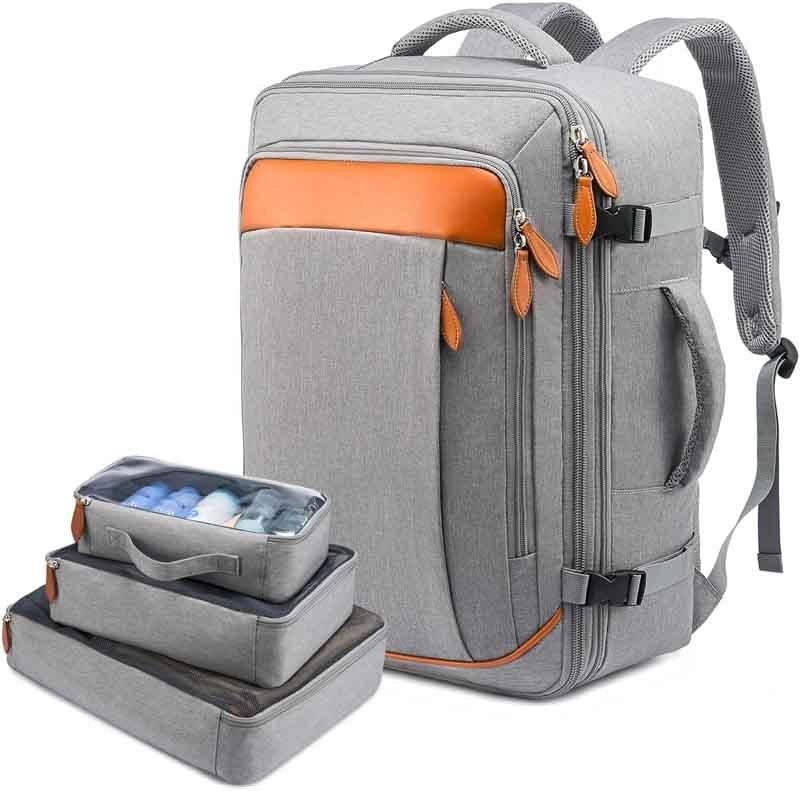
Features like expandable gussets, internal organizers, compression straps, and recessed wheels can boost usable carry-on space by up to 20%. Expandable zippers add 1–2″ of depth on demand; structured dividers prevent dead zones; compression straps flatten bulk; and soft-shell fabrics squeeze into tight bin gaps. Recessed wheels and flush-stow handles reclaim every possible inch. Choosing the right combination of these design elements ensures your bag carries more without ever exceeding airline size limits.
1. Expandable Gussets & Zippers
- How It Works: A secondary zipper opens a hidden strip of fabric around the bag’s perimeter, adding 1–2″ (2.5–5 cm) of depth.
- Capacity Gain: +10–15% volume when expanded.
- Trade-Offs: Slight increase in weight (0.5–1 lb) and a potential pinch point that can wear if over-stuffed.
- Tip: Only expand when you hit your suitcase’s weight peak—carry-ons often face weight checks on international carriers.
2. Soft-Shell vs. Hardshell Construction
Soft-Shell Bags:
- Pros: Fabric walls compress around bin items and neighboring bags, reclaiming wasted space.
- Cons: Less structural protection for fragile contents.
Hardshell Bags:
- Pros: Rigid sides protect electronics and souvenirs; consistent shape makes bin-fit predictable.
- Cons: Can’t flex into oddly shaped bin spots—may get gate-checked even if within dimensions.
Hybrid Solution: A rigid base with soft upper panels offers structure and adaptability.
3. Internal Organization & Dividers
- Structured Pockets: Dedicated sleeves for laptops, tablets, and documents keep items upright, minimizing dead air pockets.
- Mesh Compartments: Offer visibility and let items nestle against the bag’s shell, using vertical space efficiently.
- Removable Inserts: Let travelers reconfigure for bulkier clothing or gear, avoiding wasted “half-empty” sections.
4. Compression Straps & Panels
- Horizontal Straps: Cinch down soft contents like clothing to flatten them against the bag’s walls.
- Side Panels: Prevent bulging side pockets from eating into main compartment volume.
- Capacity Gain: +10–12% usable interior space.
- Design Note: Over-tightening can stress seams—look for reinforced stitching where straps anchor.
5. Recessed Wheels & Flush-Stow Handles
- Recessed Wheels: Integrated into corner cavities to avoid protrusions that count against size limits.
- Flush-Stow Handles: Retractable handles that sink completely into the bag body, eliminating extra inches at the top.
- Benefit: Recapture 2–3% of external volume—critical when you’re millimeters from an airline’s maximum.
| Feature | Capacity Gain | Weight Impact | User Benefit |
|---|---|---|---|
| Expandable Gussets | +10–15% | +0.5–1 lb | Flexibility for longer trips |
| Soft-Shell Flexibility | +8–12% | +0 lb | Fits uneven bin spaces |
| Internal Dividers | — | +0 lb | Eliminates dead zones |
| Compression Straps | +10–12% | +0 lb | Flattens bulk for dimension control |
| Recessed Wheels & Handles | +2–3% | — | Maximizes official size compliance |
Design Insight: A well-engineered bag using these features can pack 20% more without changing outer dimensions. Szoneier’s R&D team prototypes various feature sets to find the perfect balance of capacity, weight, and durability for your brand.
How to Choose the Perfect Carry-On Bag for Your Needs?

Select a carry-on by first defining your travel style—business, leisure, adventure—and then matching bag dimensions, weight, and materials to that profile. Prioritize features like laptop compartments for work, expandable gussets for vacations, or waterproof fabrics for the outdoors. Factor in airline size/weight limits, desired durability (e.g., ripstop nylon vs. canvas), and aesthetic branding. Finally, prototype with swatches and sample runs to validate fit, feel, and function before full production.
Choosing the ideal carry-on isn’t just about “does it fit the frame?” It’s about aligning every bag characteristic with how your customer actually travels. Below is a four-step framework to make that match precise:
Define Your Traveler Persona
- Business Commuters need sleek silhouettes, padded laptop sleeves, and quick-access pockets for boarding passes and chargers. Look for bags with dedicated tech compartments and trolley-through sleeves that slip over rolling luggage handles.
- Family Vacationers value volume flexibility and easy-clean interiors. Expandable gussets, spill-proof linings, and multiple packing compartments help keep everyone’s gear organized and protected.
- Adventure Seekers require rugged, weather-resistant fabrics (ripstop nylon, TPU-coated polyester) and modular attachment points for water bottles or gear. Reinforced seams and abrasion-resistant bottoms extend bag life in rough conditions.
Match Materials & Construction
- Ripstop Nylon: Ultra-lightweight, tear-proof, and packable—perfect for hikers and minimalist travelers.
- Cotton Canvas: Soft, brand-friendly surface for printing or embroidery; ideal for lifestyle or promotional bags but requires water-resistant treatments if you expect rain.
- TPU-Coated Polyester: Fully waterproof barrier that withstands splashes and spills—great for beach trips, boat travel, or climates with heavy rainfall.
- Hybrid Constructions: Combine a rigid base (for structure) with soft fabric sides (for flexibility) to balance protection with adaptability.
Prioritize Features & Ergonomics
- Expandability: Look for 1–2″ gussets to accommodate extra souvenirs or bulkier packing on longer trips. Keep in mind the weight and potential pinch points on zippers.
- Internal Organization: Removable dividers, mesh pockets, and key fobs help users access what they need quickly without rummaging through everything.
- Hardware & Handles: Recessed wheels and flush-stow handles maximize interior volume; high-quality zippers and YKK® hardware ensure longevity.
- Comfort: Ergonomic straps, padded backs, and balanced weight distribution reduce fatigue when carrying or lifting into overhead bins.
Prototype, Test & Iterate
- Sample Swatches: Order fabric samples to assess texture, print fidelity, and water repellency. Hold them indoors, under a lamp, and in natural light to confirm color consistency.
- Mini Production Runs: Produce 10–20 units to test real-world performance: load them with typical gear, weigh them, and slide them into an airline sizer.
- Traveler Feedback: Send prototypes to frequent flyers or staff for hands-on review. Gather insights on ease of use, perceived quality, and any frustrations with pockets or handles. Incorporate suggestions into your final spec sheet.
| Decision Step | Key Questions | Szoneier Solutions |
|---|---|---|
| Travel Profile | What’s your primary use? | Free consultation to map needs |
| Material Choice | Water-resistance? Printability? Weight? | Wide fabric library; eco options |
| Feature Selection | Expandable? Compartments? Hardshell? | Tailored feature prototypes |
| Prototype Testing | Fit in sizers? User comfort? Durability? | Rapid sampling; on-site testing |
Types of Carry-On Bags
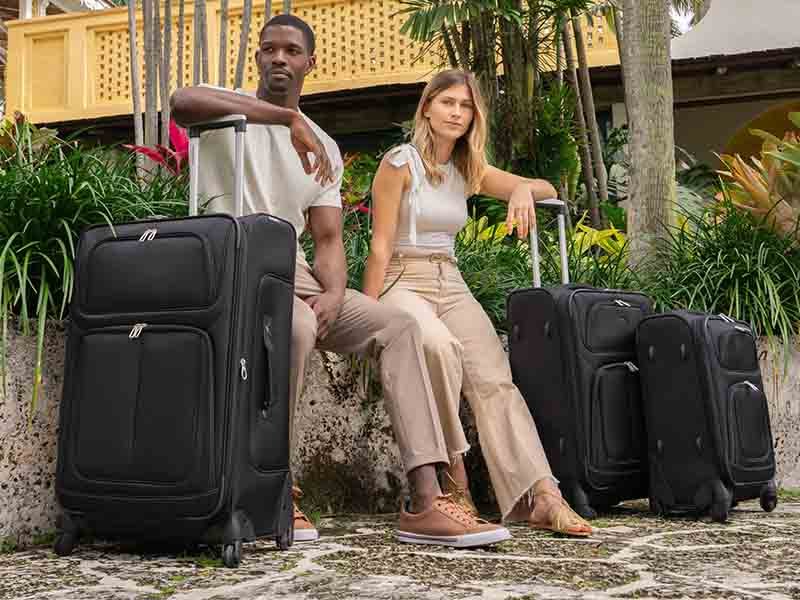
Here are the main types of carry-on bags you’ll encounter, each optimized for different traveler needs:
1. Spinner Carry-On (Four-Wheel Upright)
A hard- or soft-shell suitcase with four 360° rotating wheels, allowing effortless multidirectional movement.
Pros:
- Easy to maneuver in tight spaces
- Stands upright without leaning
- Generally offers structured protection
Cons:
- Slightly heavier than two-wheel models
- Wheels and handles count against maximum dimensions
2. Two-Wheel Roller (Roller Suitcase)
A traditional upright suitcase with two in-line wheels and a fixed orientation—tilt and roll.
Pros:
- Simple, robust wheel design
- Often lighter than spinners
- Better stability on uneven surfaces
Cons:
- Requires tilting to pull
- Less agile in crowded aisles
3. Carry-On Backpack
A travel backpack sized to fit overhead bins or under seats. Often features a “luggage pass-through” sleeve.
Pros:
- Hands-free portability
- Flexible shape to squeeze into tight spaces
- Great for adventure or minimalist travelers
Cons:
- No wheels—can strain shoulders
- Harder to access contents quickly
4. Travel Duffel
A soft-sided duffel bag, sometimes with optional wheels and a telescoping handle.
Pros:
- Lightweight and packable when empty
- Soft sides conform to bin spaces
- Expandable capacity
Cons:
- Less structure—contents may shift
- Typically lacks internal compartments
5. Tote-Style Carry-On
A large tote bag with reinforced handles, often with a zip-top closure and internal pockets.
Pros:
- Stylish, quick-access design
- Doubles as a personal item
- Lightweight and easy to stow under seat
Cons:
- Limited volume compared to upright bags
- Can lack full-size bin capacity
6. Garment Carry-On (Garment Bag)
A slim bag designed to carry suits, dresses, or work wear flat, often folding in half for bin storage.
Pros:
- Minimizes wrinkles in business attire
- Often includes small pockets for shoes/accessories
Cons:
- Narrow shape—carries fewer items overall
- Harder to pack bulky items
7. Converter Bag (Backpack → Duffel)
A hybrid that converts between backpack, duffel, and sometimes roller formats.
Pros:
- Extreme versatility for varied travel styles
- Multiple carry options
Cons:
- More complex hardware—potential maintenance points
- Slight weight/volume penalty for extra features
8. Hybrid Business Case
A compact roller or spinner with dedicated laptop compartment, garment sleeve, and accessory pockets.
Pros:
- Tailored for business travelers
- Keeps tech and documents organized
- Often slim enough for under-seat storage
Cons:
- Smaller overall interior volume
- Premium price point
Comparison at a Glance
| Type | Wheels | Capacity Flexibility | Protection | Carry Style |
|---|---|---|---|---|
| Spinner Carry-On | 4 | Low | High | Roller |
| Two-Wheel Roller | 2 | Low | High | Roller |
| Carry-On Backpack | 0 | Medium | Medium | Backpack |
| Travel Duffel | 0–2 | High | Low | Duffel / Roller |
| Tote-Style Carry-On | 0 | Low | Low | Shoulder / Hand-carry |
| Garment Carry-On | 0 | Low | Medium | Hand-carry |
| Converter Bag | 0–2 | Medium | Medium | Multi-mode |
| Hybrid Business Case | 2–4 | Low–Medium | High | Roller / Shoulder |
Choosing the right style depends on your typical trip profile:
- Frequent flyers & business travelers: Spinner or hybrid business case
- Adventure & weekend trips: Backpack or travel duffel
- Style-conscious or quick-access needs: Tote-style carry-on
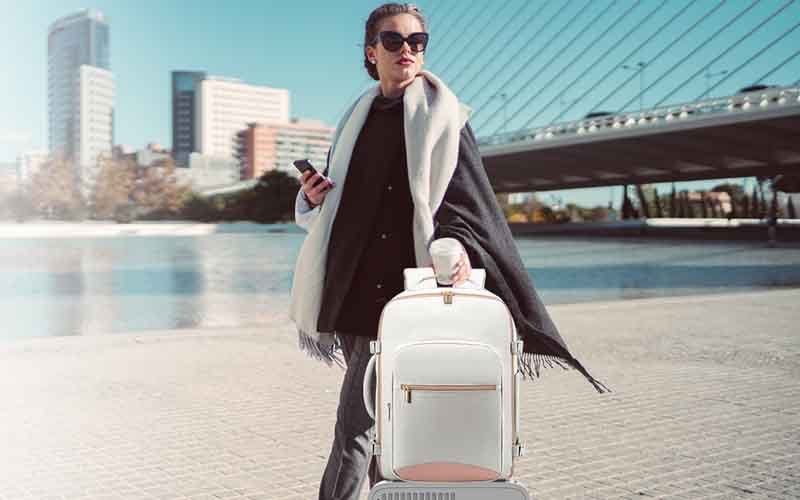
Ready to Customize Your Perfect Carry-On?
Navigating airline size rules, TSA regulations, and packing strategies can feel like a full-time job. At Szoneier, we make it simple: low MOQ, free design, fast sampling, and 100% quality assurance—all backed by 18 years of R&D and manufacturing expertise. Whether you need a 22 × 14 × 9 in universal carry-on, a custom-branded business commuter bag, or an eco-friendly adventure tote, we’ve got you covered.
Contact us today to request samples, share your design sketches, or get a no-obligation quote. Let’s partner to create carry-on bags that ensure your customers sail through security—every single time.

